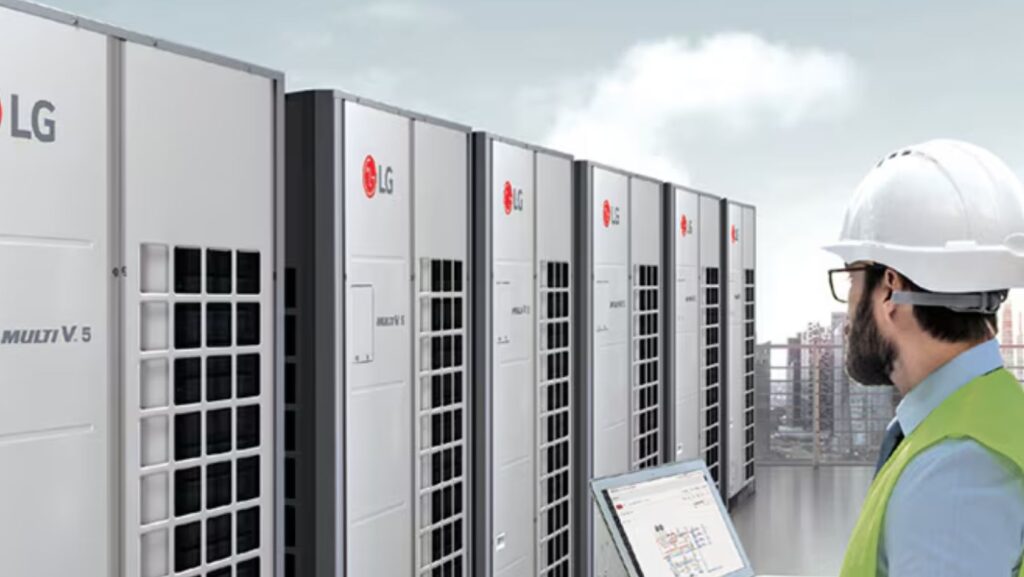
Heating, Ventilation, and Air Conditioning (HVAC) systems are the lifeblood of residential and commercial comfort, silently operating behind the scenes to ensure a harmonious and habitable environment, regardless of the temperamental whims of the weather. The importance of HVAC systems transcends mere temperature control; they are pivotal in maintaining indoor air quality, regulating humidity, and ensuring the overall well-being of the occupants within the enclosed spaces they service.
Each HVAC system is an intricate dance of mechanics and thermodynamics, carefully designed to provide the ideal balance between maintaining a comfortable indoor climate and efficient energy use. This orchestration is not without its complexities, as systems vary widely in size, type, and function depending on the demands of the space they are tailored to serve.
In this exploration of the HVAC universe, we tease the revelation of one system that has, over time, risen to the top as the most commonly deployed HVAC unit. It’s a system that has managed to strike a chord with both residential and commercial users, offering a blend of reliability, efficiency, and cost-effectiveness that outshines its competitors. As we delve deeper into the anatomy of HVAC systems, we will uncover what makes this particular system the go-to choice for the vast majority of climate control needs, painting a picture of a technological marvel that has become an unspoken standard in the world of HVAC solutions.
Criteria for a Popular HVAC Choice
When determining the most commonly used HVAC system, several factors contribute to its popularity. Initially, the efficiency of the system is paramount; consumers and businesses alike seek units that conserve energy while effectively regulating indoor temperatures. High-efficiency systems reduce not only carbon footprints but also long-term operational costs, making them more attractive investments.
Cost is another significant criterion; upfront installation and maintenance expenses play a pivotal role in decision-making. HVAC systems that offer a balance of affordability and functionality are likely to be favored. Systems that are less expensive to install and maintain without compromising performance standards are preferred by a broader user base.
User preference is equally informative in understanding popularity trends. The system’s ease of use and the level of comfort it provides impact its market acceptability. Features such as programmable thermostats, noise reduction technologies, and smart home integration can sway consumer choices significantly.
Another consideration is the system’s adaptability to a range of climates and building types. Systems that are versatile and can be customized to suit the needs of residential, commercial, or industrial spaces often see greater adoption. Additionally, the desire for environmentally friendly options is increasingly shaping the HVAC market, as eco-consciousness becomes a more prominent consumer focus.
The combination of these criteria—efficiency, cost, user preference, versatility, and environmental impact—help to clarify why some HVAC systems are more prevalent than others in today’s market.
The Most Commonly Used HVAC System
The central theme of any discussion around heating, ventilation, and air conditioning inevitably centers on identifying the most prevalent system in operation today. The answer to this widely posed question highlights the dominance of the forced-air system. Garnering considerable favor among homeowners and businesses alike, this system stands out for its ubiquitous presence across various settings.
The reasons for its widespread adoption are multifold. Initially, the forced-air system’s universal appeal can be primarily attributed to its inherent versatility. Capable of delivering not just heating and cooling, but also adept at improving indoor air quality through filtering, this system ensures a comfortable and healthy environment regardless of the season.
Secondly, its compatibility with modern thermostats, including smart home technology, allows users unprecedented control over their indoor climate, contributing significantly to its popularity. The ability to seamlessly regulate temperature settings via a smartphone or other devices is an attribute that resonates powerfully with a tech-savvy population prioritizing convenience and efficiency.

Furthermore, the forced-air system’s economic advantage cannot be understated. The initial installation cost, paired with its maintenance expenses, are generally lower compared to alternative HVAC systems, making it an accessible option for a wider audience. Additionally, advancements in energy-efficient designs offer the promise of reducing utility bills, further cementing its status as the most commonly used HVAC system.
Advantages of the Highest HVAC System
The ubiquity of a particular HVAC system is typically because it provides a blend of advantages that cater to the broadest range of needs, from residential comfort to industrial efficiency. The most commonly used HVAC system is the central air conditioning and heating system, which employs a network of ducts to distribute conditioned air throughout a building. This system triumphs as the prevalent choice due to several compelling benefits it offers.
At the top of the list is the comprehensive climate control that central HVAC systems provide. They enable consistent temperature management across multiple rooms or zones, creating a uniformly comfortable environment. The central system’s ductwork facilitates efficient air circulation, decreasing the likelihood of uneven heating or cooling spots within a space.
Another significant advantage involves air quality. Central HVAC systems often come with advanced filtration options that effectively remove pollutants, allergens, and dust from the air, contributing to a healthier living or working environment. This is particularly beneficial for individuals with respiratory issues or sensitivities to airborne particles.
Furthermore, the scalability of central HVAC systems permits their application in structures ranging from small homes to large commercial buildings. They can be designed to fit the specific requirements of any given space, rendering them an adaptable solution for various contexts. Moreover, modern central HVAC units have seen remarkable advancements in energy efficiency, reducing operational costs and environmental impact. When paired with programmable thermostats, these systems optimize energy use, leading to lower utility bills without sacrificing comfort.
Overall, the central HVAC system’s combination of uniform temperature control, improved air quality, flexibility, and energy efficiency accounts for its favored status among homeowners and builders alike. These systems address most conditioning needs with a degree of reliability and convenience that other HVAC alternatives struggle to match.
Comparing Alternatives: Other HVAC Systems on the Market
While the most commonly used HVAC system, often a central forced air system, enjoys widespread popularity for its overall efficiency and effectiveness in a variety of settings, there are several other HVAC options available on the market. These alternatives cater to different needs, preferences, and constraints that homeowners and building managers might encounter.
One alternative is the ductless mini-split system, which is an excellent choice for retrofitting older buildings without existing ductwork or for providing individualized climate control in separate spaces. While mini-splits are known for their energy efficiency and quieter operation, the initial installation cost can be significantly higher than traditional systems, thus they may not be as commonly adopted for whole-house heating and cooling.
Another option is the heat pump system, which operates by transferring heat rather than generating it through combustion, making it an environmentally-friendly choice. Air-source heat pumps are popular in milder climates, whereas ground-source (geothermal) heat pumps provide a more consistent output but involve considerable upfront installation costs and land space for the ground loops, rendering them less common.

Hydronic, or radiant, heating systems are appreciated for their comfortable and even heat distribution. These systems can be installed under floors or within walls. However, the cost and complexity of installing radiant systems, along with the difficulty of integrating air conditioning, often make them less favorable compared to forced air systems.
Despite these alternatives, none have surpassed the central HVAC system in terms of widespread use. Often, these systems provide a balance of cost-effectiveness, ease of installation, and energy efficiency, making them less popular overall when contrasted with the leading choice. Nonetheless, for specific applications or personal preferences, these alternatives may offer superior solutions, making them an important part of the HVAC landscape to consider.
Conclusion: Making the Right HVAC Decision
Selecting the right HVAC system for your home or business is a decision that can have long-standing effects on comfort, energy consumption, and maintenance costs. Through this article, we’ve explored the intricacies of what makes a particular HVAC system rise above the rest in terms of popularity and user preference. The most used HVAC system, with its compelling blend of efficiency, reliability, and affordability, stands out as an ideal choice for many. However, it’s crucial to remember that while it leads the pack, it may not be the perfect solution for every situation.
Every environment has its unique set of requirements, whether it is the climate, building size, or the occupants’ specific needs. We recognize that the prominent HVAC solution, despite its wide-ranging applicability, is part of a diverse market with a variety of options to consider. Alternative systems come with their own set of advantages that may be more suited to certain conditions and should not be dismissed outright.
In summary, the decision-making process for choosing an HVAC system should be approached with thoughtful consideration of the key takeaways discussed. It’s important to analyze your personal or organizational needs, evaluate the different systems’ pros and cons, and consider long-term implications such as energy savings and maintenance demands. Consultation with HVAC professionals can provide tailored advice that complements the foundational knowledge you have gained. With the right approach, you can ensure that you select an HVAC system that is not just common but is genuinely suited to your specific needs, striking the perfect balance between comfort and efficiency.



